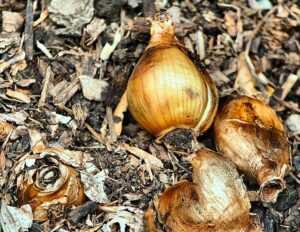Cloning cannabis plants is a fascinating blend of art and science, offering cultivators an efficient way to replicate their most valued strains. This technique ensures genetic consistency and abundant harvests. This guide aims to provide a thorough understanding of the cloning process, from the initial selection of a mother plant to the final steps of transplanting clones. It’s designed to be a valuable resource for both seasoned cultivators and newcomers to the field of cannabis cultivation.
Understanding Cannabis Clones
What is a Cannabis Clone?
A cannabis clone is a cutting taken from a mother plant that is genetically identical to its parent. This form of asexual reproduction allows cultivators to bypass the unpredictable germination stage of seeds, leading to a more uniform and consistent quality in the plants. Cloning cannabis is a time-honored technique in horticulture, applied extensively in cannabis cultivation due to its many benefits.
Advantages of Cloning cannabis
Speed and Efficiency: Cloning cannabis significantly expedites the growing process. By skipping the seed germination stage, clones can quickly develop into mature plants, thus speeding up the cultivation cycle.
Consistency: As clones are genetic copies of the mother plant, they inherit its characteristics precisely. This uniformity is crucial for maintaining the quality and traits of preferred strains.
Cost-Effectiveness: Cloning can be more economical than purchasing seeds, especially for specific, high-value strains. It also allows for greater control over the cultivation process without the need for continuous seed purchases.
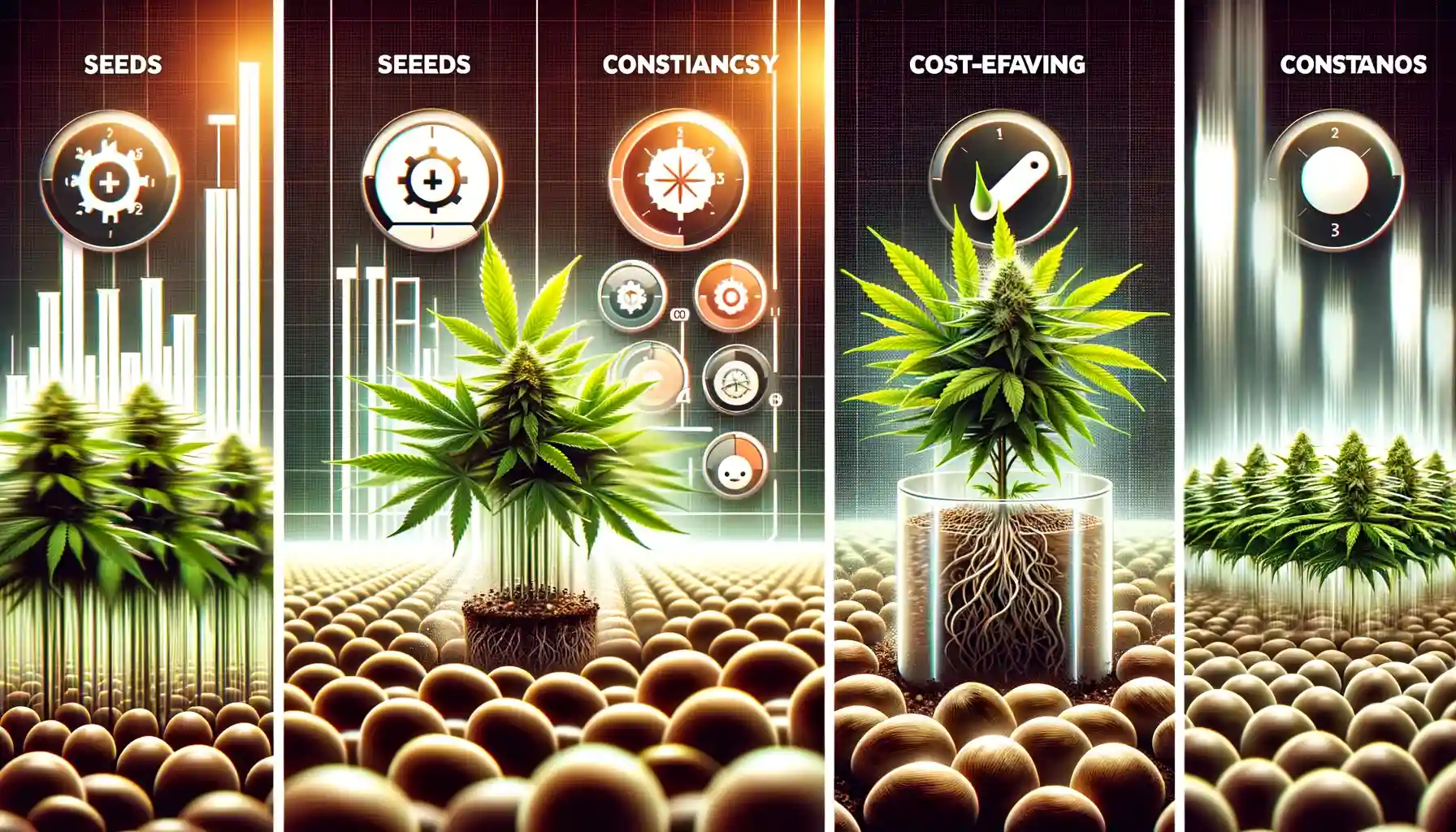
Selecting the Mother Plant
Selecting the perfect mother plant is a crucial aspect of successful cannabis cloning. The mother plant is used to produce genetically identical offspring, also known as clones. Therefore, it is essential to carefully select a healthy and robust mother plant to ensure the quality and productivity of the clones.
When choosing a mother plant, the first thing to look for is its overall health. A healthy plant is a good indicator that it has the strength and vigor to produce strong and resilient clones. Look for plants that have strong and sturdy stems, vibrant green leaves, and a thriving root system. These are all signs of a healthy and vigorous plant that is capable of producing high-quality clones.
Apart from good health, it is also essential to consider the yield and quality of the chosen mother plant. Look for plants that are known for their high yield and exceptional quality. These traits will be passed on to the clones, ensuring that they also produce a bountiful harvest with excellent quality. This is particularly important for commercial growers who aim to produce large quantities of high-quality plants.
When selecting mother plants for cloning, it is vital to not only focus on yield and quality but also consider the desirable traits of the mother plant. These traits, such as specific aroma, flavor profile, and resistance to pests and diseases, can greatly impact the value of the clones.
By choosing a mother plant with unique and desirable traits, these characteristics can be passed down to the clones, making them highly sought after in the market. Additionally, it is crucial to carefully consider the traits of the mother plant as they can greatly affect the success and profitability of the clones.

The Cannabis Cloning Process
Taking Cuttings
The process begins with selecting the right branches for cloning. Ideal cuttings should have at least three nodes. Using a sterilized knife or razor, make a clean cut at a 45° angle. This angle increases the surface area for root growth and improves water uptake, which is crucial for the initial stages of the clone’s development.
Rooting Your Plants
After taking the cuttings, the next step is to root them. This can be done using various mediums such as plant starter cubes or high-quality soil. The application of a rooting hormone can stimulate and accelerate root development, a critical step for the successful establishment of the clone. The medium should be kept moist but not waterlogged to encourage healthy root growth.
Transplanting the Clones
Once the roots have developed to a length of 1-2 inches, the clones are ready to be transplanted. This is a delicate stage where the new root system must be carefully handled to ensure the clones are stable in their new environment. The soil used for transplanting should be moist to provide the necessary support and hydration for the young plants.
Aftercare and Troubleshooting
Regular maintenance of clones is essential for their successful development. This includes ensuring adequate water supply, appropriate humidity levels, and proper lighting. It’s also important to quarantine new clones to prevent the spread of pests and diseases. Additionally, removing any unsuccessful clones promptly is crucial to prevent the onset of mold or diseases, which could affect the entire crop.

Detailed Breakdown of Cloning Cannabis Stages
Cutting Stage
The first step in successful cannabis cloning is selecting the right branch from the mother plant. Ideal candidates are healthy, vigorous branches with at least three nodes. Using a sterilized knife or razor, make a clean, 45-degree angle cut. This angle increases the surface area for root growth and helps the cutting absorb more water. Immediately after cutting, place the cutting in water to prevent air embolism, which can hinder root development.
Rooting Stage
After taking the cuttings, the next critical phase is rooting. The environment for rooting should be carefully controlled to maintain rooting success —maintain a consistent temperature, humidity, and indirect lighting to encourage growth. Using a rooting medium like plant starter cubes or high-quality soil can significantly enhance the rooting process. The application of rooting hormone, whether organic or synthetic, can stimulate faster and more robust root development. Ensure that the medium remains moist but not waterlogged to prevent root rot.
Maturation Stage
Once the roots are established, typically when they’re 1-2 inches long, the clones are ready for the maturation stage. This stage is all about transitioning the clone from a state of rooting to growing. Gradual acclimatization to the new environment is key. Begin by introducing the clones to their growing medium, ensuring it’s rich in nutrients and well-aerated. Monitor the clones closely for signs of stress and adjust the conditions accordingly, focusing on light intensity, watering schedule, and nutrient levels.
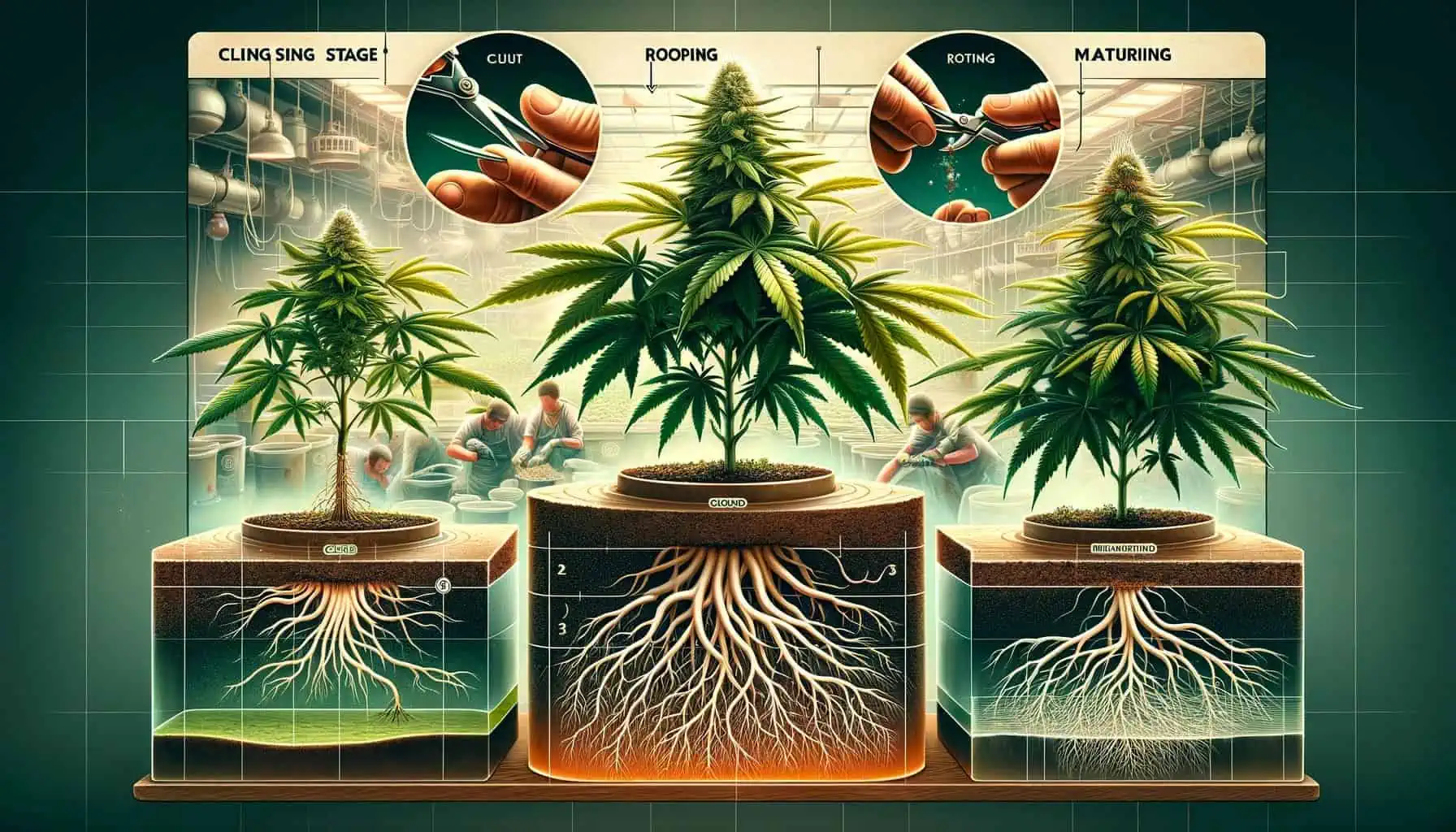
Advanced Cannabis Cloning Techniques for Experienced Growers
Aeroponics Cloning
Aeroponics, a method where roots are suspended in air and misted with nutrient solution, offers a high-tech approach to cloning. This method allows for greater oxygenation of the roots, leading to faster growth rates. Setting up an aeroponic system requires a misting system, a timer, and a reservoir for the nutrient solution. The key to success lies in maintaining the right balance of humidity and air circulation to prevent drying out and root rot.
Hydroponics Cloning
In hydroponics cloning, cuttings are placed in a water-based nutrient solution. This method allows for direct and constant access to nutrients, promoting rapid root development. Choosing the right hydroponic system, be it deep water culture or ebb and flow, is crucial. The nutrient solution must be carefully monitored and adjusted for pH and electrical conductivity to ensure optimal growth conditions.
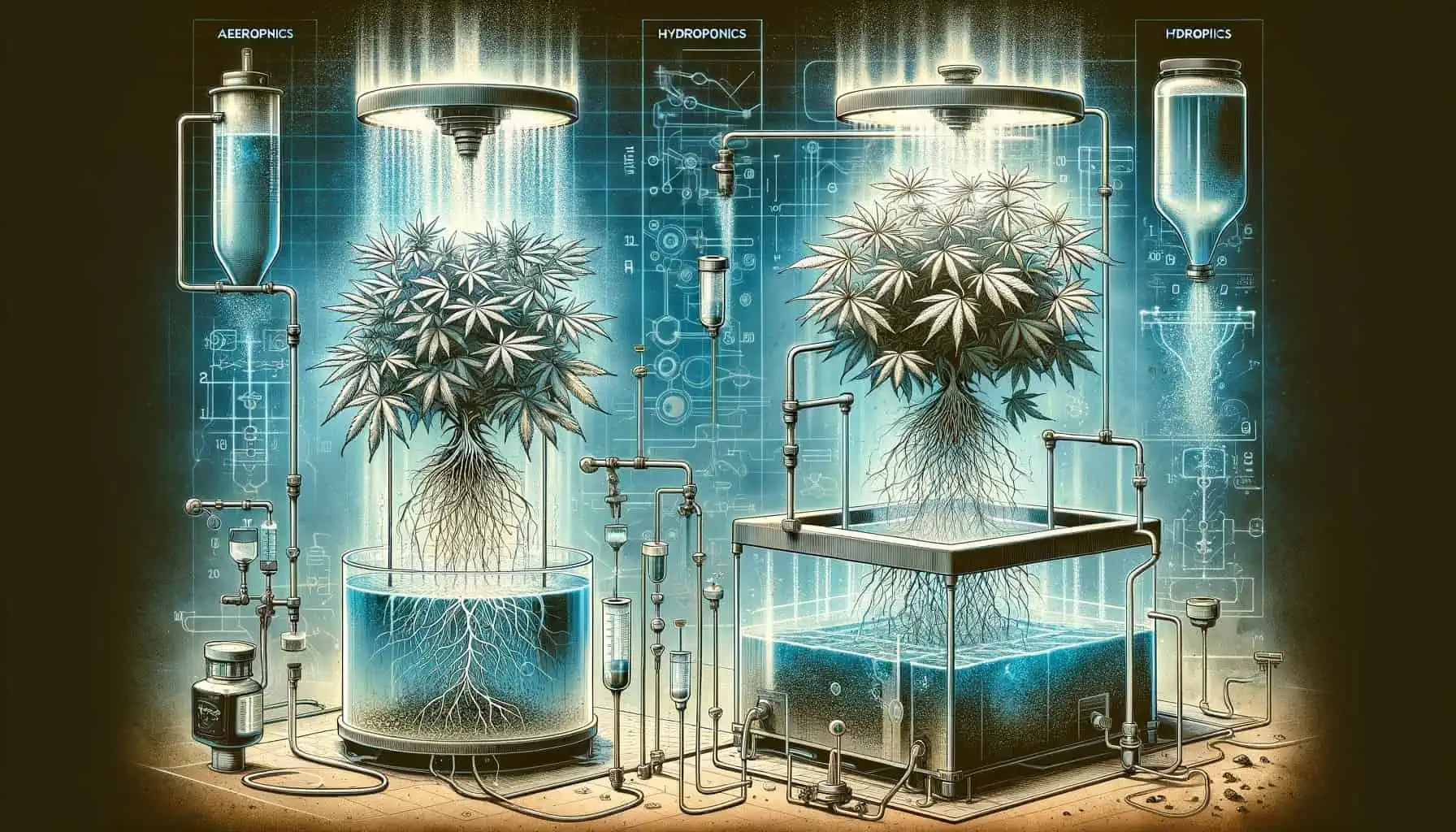
Overcoming Common Challenges When Cloning Cannabis
Addressing Wilting and Root Rot
Wilting in clones can be a sign of various issues, from inadequate watering to root disease. Ensuring a consistent watering schedule and proper humidity levels can mitigate this issue. Root rot, often caused by overwatering or poor aeration, can be catastrophic for clones. To prevent this, ensure that the rooting medium is well-drained and aerated. Regular inspection of roots for signs of decay is also vital.
Pest Management
Pests can be particularly detrimental in the delicate cloning stage. Implementing an integrated pest management system that includes regular monitoring, natural predators, and organic insecticides can keep pest infestations at bay. Quarantine new clones to prevent the introduction of pests and diseases into your growing area.
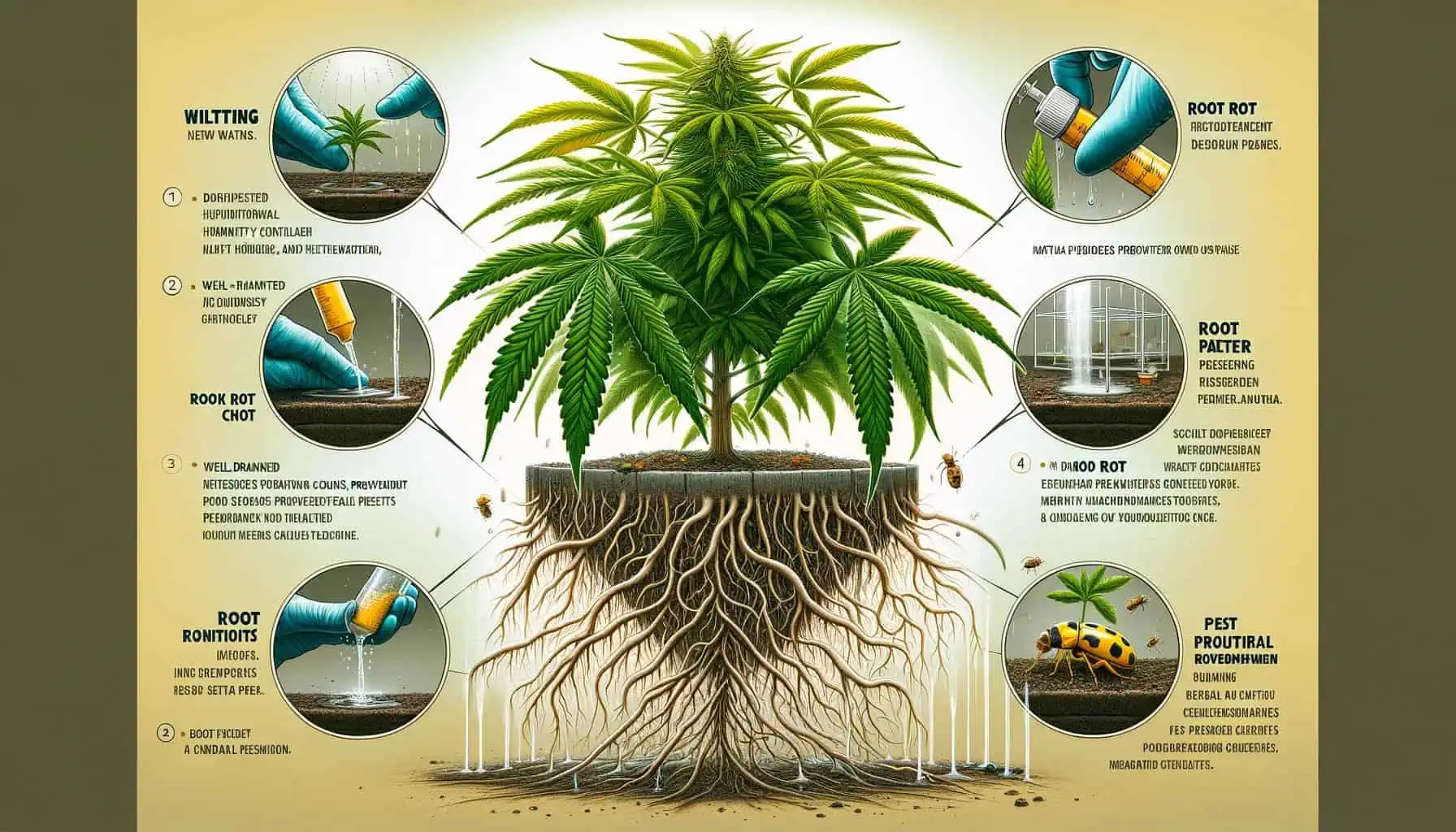
Cloning Cannabis Organically: A Natural Approach
Cloning cannabis has become an increasingly popular method for reproducing high-quality plants. For those looking to cultivate their own cannabis, organic cloning offers a natural approach that not only produces healthy plants but also aligns with sustainable practices.
One of the key elements of organic cloning cannabis is the use of natural rooting mediums. These mediums, such as peat moss, coco coir, or composted soil, not only provide the necessary support for root growth but also offer a range of nutrients that can benefit the overall health of the plant. Unlike synthetic rooting mediums, which may contain chemicals and additives, natural mediums are free from harmful substances and help maintain the purity of the plant.
In addition to promoting healthy root growth, organic cloning cannabis also focuses on organic pest control methods. By introducing beneficial insects, such as ladybugs or praying mantises, into the growing environment, cannabis growers can effectively manage pests without resorting to harsh chemicals. These insects act as natural predators of common pests, keeping their populations under control without disrupting the delicate balance of the ecosystem. Additionally, using organic sprays, made from natural ingredients like essential oils, can help to repel pests and keep them at bay.
Organic cannabis cloning cannabis not only promotes the use of natural materials and methods, but it also emphasizes the importance of sustainability. By reducing the reliance on synthetic fertilizers and chemicals, organic cloning helps to protect the environment and conserve resources. It also allows for the production of healthier, more natural cannabis products that are free from harmful substances and pesticides.
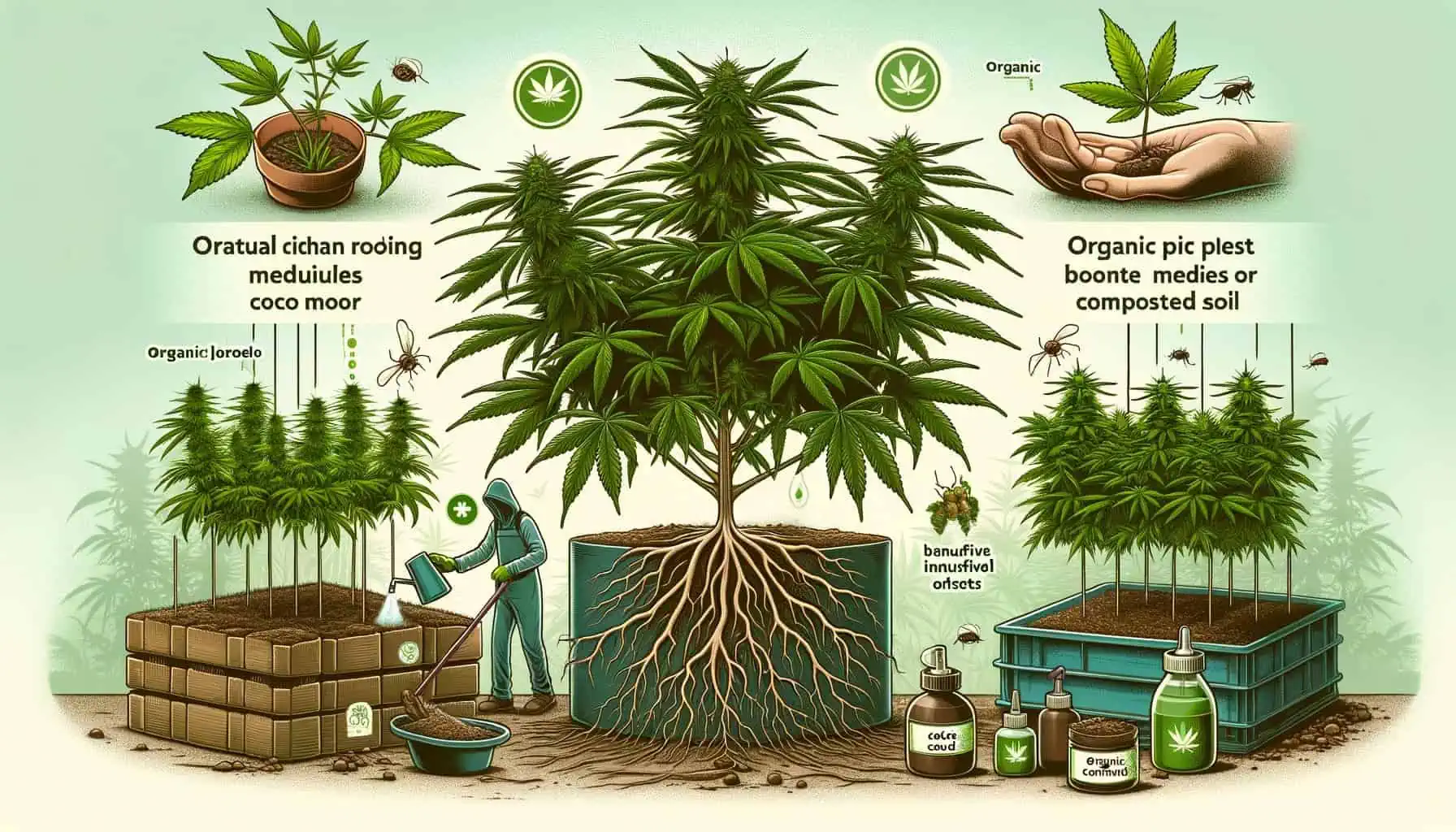
The Future of Cannabis Cultivation: Cloning Cannabis and Beyond
The cannabis industry has undergone significant advancements in cultivation techniques over the years, and it shows no signs of slowing down. One area of rapid development is in the field of cloning and genetic modification, which has the potential to revolutionize the way we grow and consume cannabis.
Cloning involves taking a cutting from a parent plant and cultivating it to produce an identical genetic copy. This process has been used successfully in the cannabis industry for decades, allowing growers to produce large quantities of identical plants with desirable traits. However, there are limitations to traditional cloning cannabis methods, such as the risk of disease transmission and a lack of diversity in the gene pool.
This is where genetic modification comes into play. By altering the genetic makeup of a plant, it is possible to enhance desired traits like yield, potency, and disease resistance. This can be achieved through techniques such as gene editing and tissue culture, which allow for precise modifications to be made to a plant’s DNA.
The potential benefits of genetic modification in cannabis cultivation are vast. By creating plants with higher yields and increased potency, growers can increase their profitability and meet the growing demand for high-quality cannabis. Additionally, genetic modification can also lead to the creation of disease-resistant strains, which can help protect crops from pests and pathogens that can devastate entire harvests.
But genetic modification is not without its controversies. Many argue that it goes against the natural principles of cannabis cultivation and could potentially harm the plant’s genetic diversity. There are also concerns about the safety and ethics of consuming genetically modified cannabis products. However, it is important to note that cannabis cloning cannabis is a separate technique from genetic modification.
Cannabis cloning involves taking a cutting from a healthy, mature plant and creating an exact genetic replica by rooting the cutting in a suitable growing medium. This process allows growers to maintain the desirable traits of a particular plant, such as its flavor profile or cannabinoid content.
Furthermore, cannabis cloning can also be an effective method for preserving rare or endangered strains, helping to protect the plant’s genetic diversity. With the “clone cannabis guide expand” document, growers can gain valuable insights and step-by-step instructions on how to successfully clone cannabis plants, ultimately enhancing their cultivation practices and ensuring a consistent supply of high-quality cannabis.

Legal and Ethical Considerations in Cannabis Cloning
Legal and ethical considerations are crucial aspects to consider in the process of cannabis cloning. As the cannabis industry continues to evolve and gain acceptance, it is essential for individuals involved in cultivation to have a comprehensive understanding of the legal framework surrounding cannabis cloning. This entails staying informed about any changes in legislation and obtaining the necessary permits to ensure compliance with local and federal laws.
With the legalization of cannabis in many states and countries, there are specific regulations that must be followed when it comes to the cultivation of cannabis. These laws are in place to protect both the producers and consumers of cannabis and to ensure that the product is safe for consumption. Therefore, it is essential to stay updated on any changes in legislation to avoid any legal consequences.
Moreover, obtaining the necessary permits is a critical step in the cannabis cloning cannabis process. Permits are required for both medical and recreational cannabis cultivation, and they vary depending on the location. These permits not only ensure compliance with the law but also provide a record of the cultivation process, which can be helpful in case of any legal issues.
Apart from legal considerations, ethical considerations also play a significant role in cannabis cloning. One of the most crucial ethical considerations is respecting intellectual property rights. This includes patents and trademarks related to certain strains of cannabis. It is important to do thorough research and ensure that the clones being produced do not infringe on any existing intellectual property rights.
Another ethical consideration is ensuring sustainable and responsible cloning cannabis practices. As the demand for cannabis increases, so does the need for efficient and effective cloning methods.

Maximizing Yields: Expert Strategies and Techniques
Maximizing yields in any type of cultivation is a top priority for growers. In order to achieve the highest possible yields, expert strategies and techniques must be implemented.
One crucial aspect of maximizing yields is optimizing the environment for clones. Clones are genetically identical plants that are produced through asexual reproduction. They are commonly used in the cultivation of cannabis, as well as other crops.
The environment in which clones are grown plays a vital role in their development and overall health. Fine-tuning factors such as lighting, temperature, and humidity is essential for optimal growth. Clones require specific levels of light in order to thrive. Too much or too little light can result in stunted growth or even death. It is important to provide the appropriate amount of light for each stage of growth, as the needs of clones will differ from seedlings and mature plants.
Temperature and humidity are also key factors in maximizing yields for clones. Maintaining a consistent temperature and humidity level is crucial for clone health. Extreme temperatures can stress the plants and hinder growth, while high humidity levels can lead to the growth of mold and other harmful pathogens. It is important to monitor and adjust these factors regularly to ensure a healthy environment for clones.
In addition to environmental factors, understanding and managing nutrient uptake is crucial for maximizing yields in clones. During the different growth stages, clones will have varying nutrient requirements. Providing the right balance of nutrients is essential for healthy and robust growth.
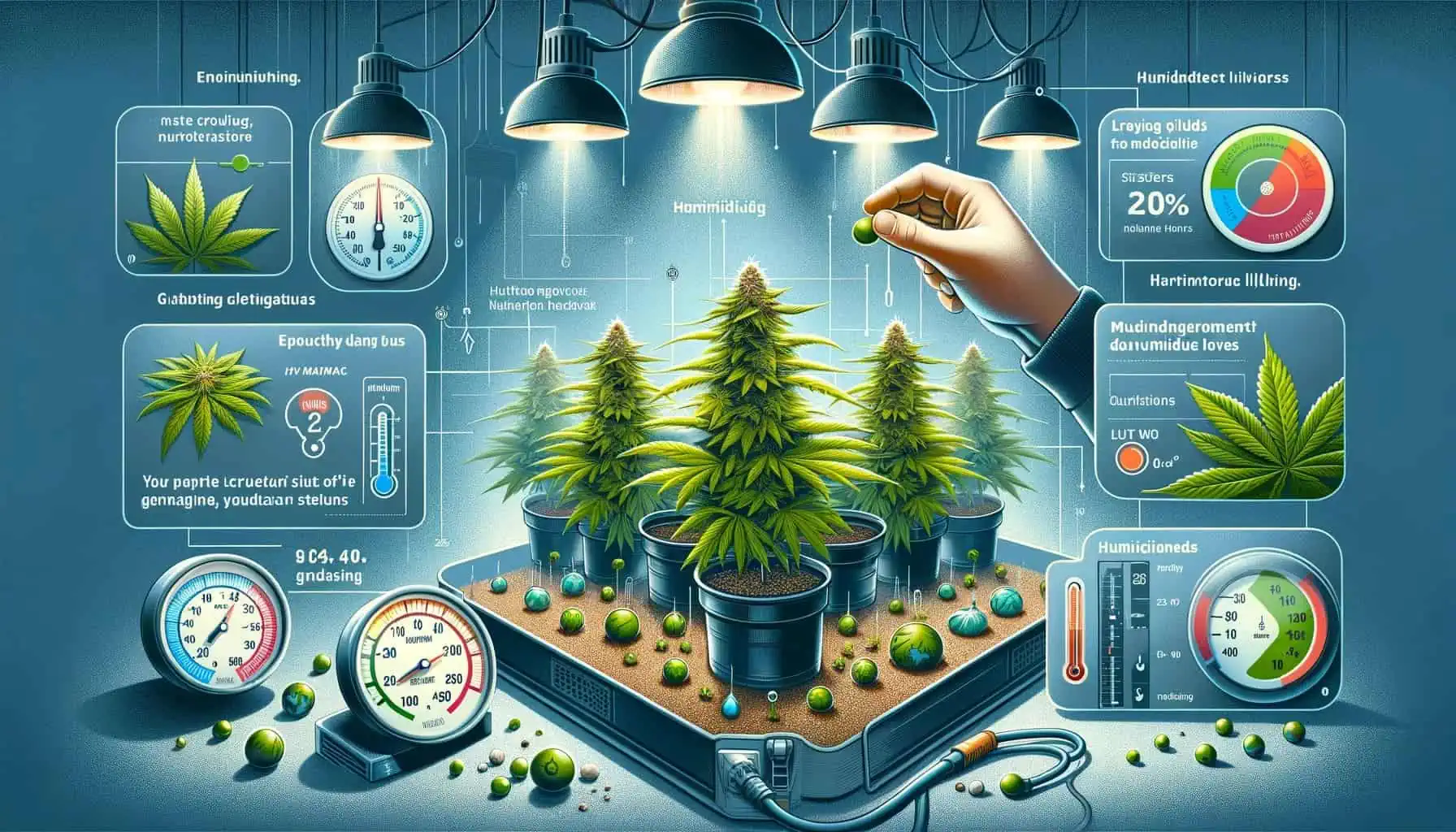
Genetic Preservation and Strain Selection
Genetic preservation and strain selection are crucial factors in the success of long-term cloning cannabis and maintenance. These processes involve carefully selecting and preserving specific strains of organisms in order to maintain their genetic integrity. This ensures that the resulting clones are of high quality and consistency.
One of the first steps in genetic preservation is to identify and isolate desirable strains. This requires a thorough understanding of the characteristics and traits of the organisms being studied. Scientists must carefully observe and analyze the genetic makeup of different strains to determine which ones possess the desired traits for cloning.
Once the desired strains have been identified, the next step is to establish a preservation plan. This can involve various methods such as cryopreservation, which involves freezing the cells at extremely low temperatures to maintain their viability or maintaining cultures in sterile environments. The chosen preservation method will depend on the specific needs of the organism and the resources available.
In addition to preserving genetic diversity, it is also important to consider the stability of the genetic material in order to ensure the quality of the resulting clones. Genetic stability refers to the ability of an organism’s genetic material to remain unchanged over time. This is crucial in cloning, as any changes or mutations in the genetic material can result in altered traits or characteristics in the clones.
To maintain genetic stability, scientists must carefully monitor and track the genetic material of the preserved strains. This can be done through regular testing and analysis to ensure that the genetic material remains unchanged.

Cloning Cannabis vs. Seeding: A Comparative Analysis
Cloning and seeding are two methods commonly used in agriculture to propagate plants and crops. While both techniques serve the same purpose of producing a larger yield of identical plants, there are distinct differences between the two processes. In this comparative analysis, we will delve deeper into the advantages and disadvantages of cloning cannabis versus seeding, providing growers with valuable insights to help them determine which method is best suited for their specific goals and resources.
One of the main advantages of cloning cannabis is the ability to produce genetically identical plants from a single-parent plant. This ensures that the plants will have consistent traits and characteristics, making it easier for growers to predict the quality and quantity of their harvest. In contrast, seeding involves the use of seeds from different parent plants, resulting in genetic variation among the plants. This can make it more challenging for growers to achieve uniformity in their crops.
Another factor to consider is the time it takes for plants to reach maturity. Cloning cannabis typically yields mature plants much faster than seeding. This is because cloned plants are essentially a replica of the parent plant, with established root systems and developed structures. Seeded plants, on the other hand, require more time to grow and develop, as they start from a seed and go through the stages of germination, growth, and maturation.
Cost is also an important consideration when choosing between cloning and seeding. Cloning cannabis can be a more expensive process, as it requires specialized equipment and materials such as cloning gels, cloning machines, and growth hormones. In contrast, to consider is the time and effort involved in the cloning process.
While seeding simply requires planting seeds and allowing them to germinate, cloning cannabis involves carefully selecting and cutting sections of the parent plant, treating them with rooting hormones, and providing the optimal conditions for root development. This can be a time-consuming and labor-intensive process, especially for beginners.
On the other hand, once the initial cloning cannabis process is successfully completed, growers can continue to propagate the same genetics for multiple harvests without the need to purchase new seeds each time. This can save both time and money in the long run.
Additionally, cloning cannabis allows growers to preserve the characteristics of rare or unique strains that may be difficult to find in seed form. By carefully selecting and cloning these plants, growers can ensure their continued existence and availability in the market.
However, it is important to note that the lack of genetic variation in cloned plants can also be a disadvantage. It makes them more susceptible to diseases and pests, as any vulnerability present in the parent plant will be passed down to its clones.
This can increase the risk of crop failure and require growers to take extra precautions to maintain the health and vitality of their clones. In conclusion, both cloning cannabis and seeding cannabis have their own advantages and disadvantages. The choice between the two methods ultimately depends on factors such as the growers’ goals, resources, and level of experience.

DIY Cloning Setups: Building Your Own Cloning Station
DIY cloning setups have become increasingly popular among those interested in a more hands-on approach to cloning. Building your own cloning station not only allows for a more personalized and customizable experience, but it can also be a cost-effective option for those looking to save money on expensive pre-made cloning systems.
To get started, you will need to gather the necessary equipment for your cloning station. This may include a grow tent, grow lights, a clone tray, cloning gel, rooting hormone, cloning solution, and a cloning dome. It is important to research and invest in high-quality equipment to ensure the success of your cloning endeavors.
Once you have all of your equipment, it is time to set up your cloning station. The first step is to assemble your grow tent. This will provide a controlled and enclosed environment for your clones to thrive in. Next, you will need to set up your grow lights. These lights will provide the necessary spectrum of light for successful cloning.
The next step is to create a suitable environment for your clones. This includes maintaining proper temperature and humidity levels. It is recommended to keep the temperature between 70-75 degrees Fahrenheit and the humidity between 80-90%. This will help promote healthy and vigorous root growth.
Now it is time to prepare your clones for cloning. Begin by taking your clones from a healthy and well-established mother plant. Using a sharp and sterile razor, make a clean cut at a 45-degree angle on the stem of the clone. Then, dip the cut end of the clone into a rooting hormone solution. This will help stimulate root growth and increase the chances of successfully cloning cannabis.
Once the cloning cannabis has been treated with rooting hormone, carefully place it into a small container filled with a suitable growing medium. It is crucial to provide the clone with the right balance of air, water, and nutrients to encourage healthy root development.
Ensure that the growing medium is moist but not overly saturated, as excessive moisture can lead to rotting. Place the container in a warm and well-lit area, preferably under a grow light or in a greenhouse. Monitor the clones closely, ensuring they receive adequate light and moisture, and within a few weeks, you should start to see roots forming.
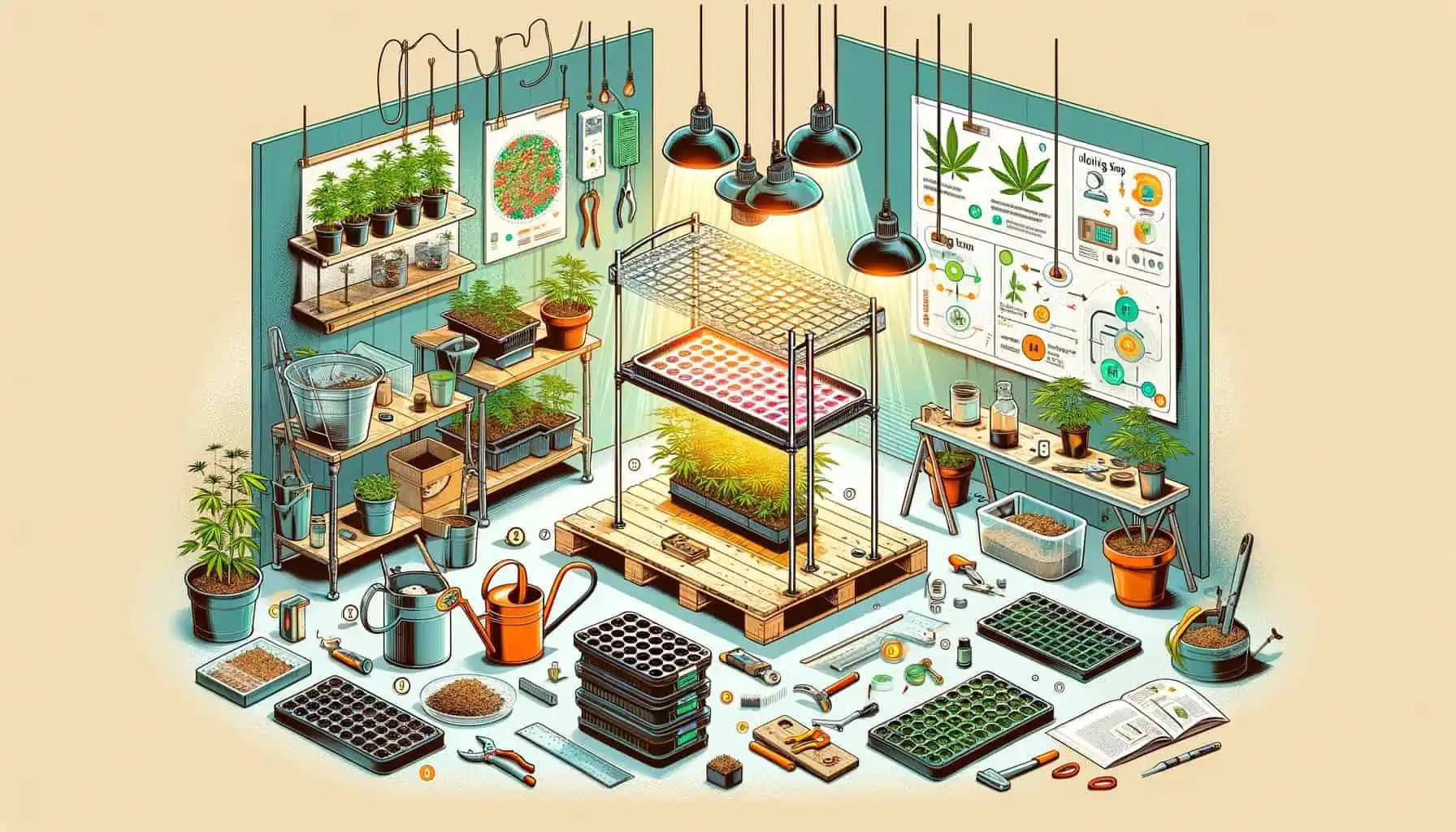
Organic vs. Synthetic Rooting Hormones: Pros and Cons
Organic vs. synthetic rooting hormones is a topic that has been debated among growers and gardeners for years while discussing its importance in cloning cannabis. Rooting hormones are used to promote the growth and development of plant cuttings, helping them to form healthy and strong root systems.
One of the main differences between organic and synthetic rooting hormones is their source. Organic rooting hormones are derived from natural sources such as plants, seaweed, and other organic materials. They are considered to be more environmentally friendly and sustainable compared to synthetic hormones, which are chemically produced in a laboratory.
Effectiveness is another important factor to consider when choosing between organic and synthetic rooting hormones. While both types can be effective in promoting root growth, organic hormones tend to work slower but have longer-lasting effects. This is because they are derived from natural sources and therefore take longer to break down in the soil. On the other hand, synthetic hormones work faster but may not provide long-term benefits for the plant.
Safety is a crucial concern for many growers when it comes to using rooting hormones. Organic hormones are generally considered to be safer as they do not contain any harsh chemicals that could potentially harm the plant or the environment. Synthetic hormones, on the other hand, may contain harmful chemicals that can have negative effects on the plant and surrounding ecosystem.
In terms of overall impact, organic rooting hormones are believed to have a more positive impact on clone development. This is because they work with the natural processes of the plant, providing it with essential nutrients and hormones that it needs for healthy growing.
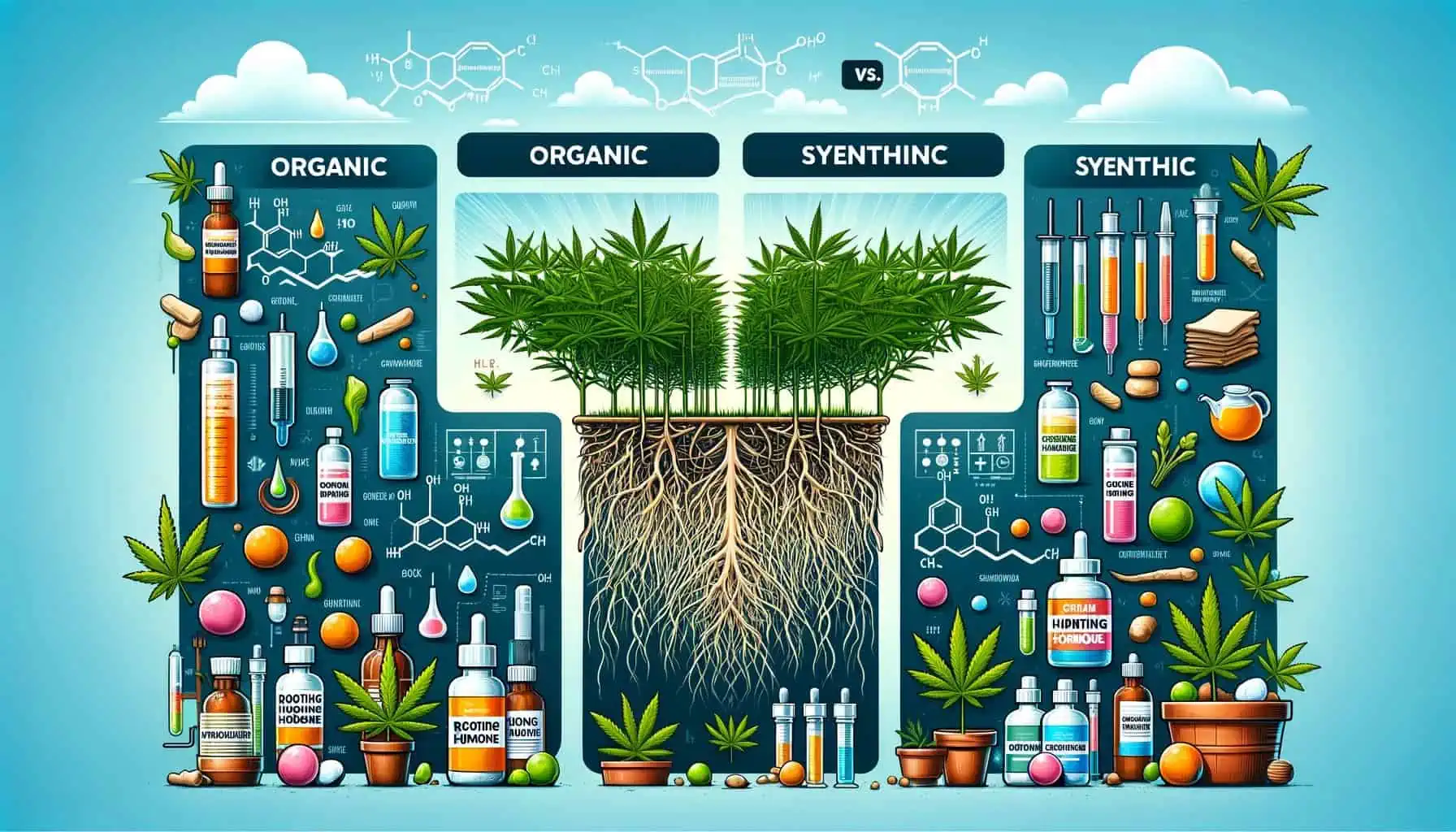
Integrated Pest Management in Cloning cannabis
Integrated Pest Management (IPM) is a holistic approach to pest control that focuses on utilizing a combination of strategies for effective and sustainable management of pests. This approach is particularly important in the cloning cannabis process, where pests can pose a major threat to the health and survival of cloned plants. In this section, we will delve deeper into the concept of IPM and discuss how it can be applied specifically to cloning.
One of the key principles of IPM is prevention. This means taking steps to prevent pests from becoming a problem in the first place. In the case of cloning, this can include practicing good hygiene and sanitation in the cloning cannabis environment. This means regularly cleaning and disinfecting equipment, as well as properly disposing of any plant material that may attract pests. Additionally, it is important to start with healthy donor plants that are free from pests and diseases, as they can easily be transferred to the clones.
Another important aspect of IPM in cloning cannabis is the use of natural remedies. This involves using natural substances and methods to control pests rather than relying on chemical pesticides. Some examples of natural remedies include using neem oil, garlic spray, or introducing beneficial insects that prey on pests. These methods are not only safer for the environment, but they also help to avoid the development of pesticide resistance in pests.
In addition to prevention and natural remedies, Integrated Pest Management (IPM) also places great emphasis on utilizing environmentally friendly solutions for pest management. This approach involves carefully selecting methods that have minimal impact on the environment and non-target organisms. This not only ensures the protection of our ecosystems but also promotes sustainable and responsible practices.
By incorporating environmentally friendly solutions into pest management, we can effectively control pests while minimizing harm to the environment.
IPM recognizes the importance of a balance between pest management and environmental conservation, making it a responsible and effective approach to addressing pest issues.
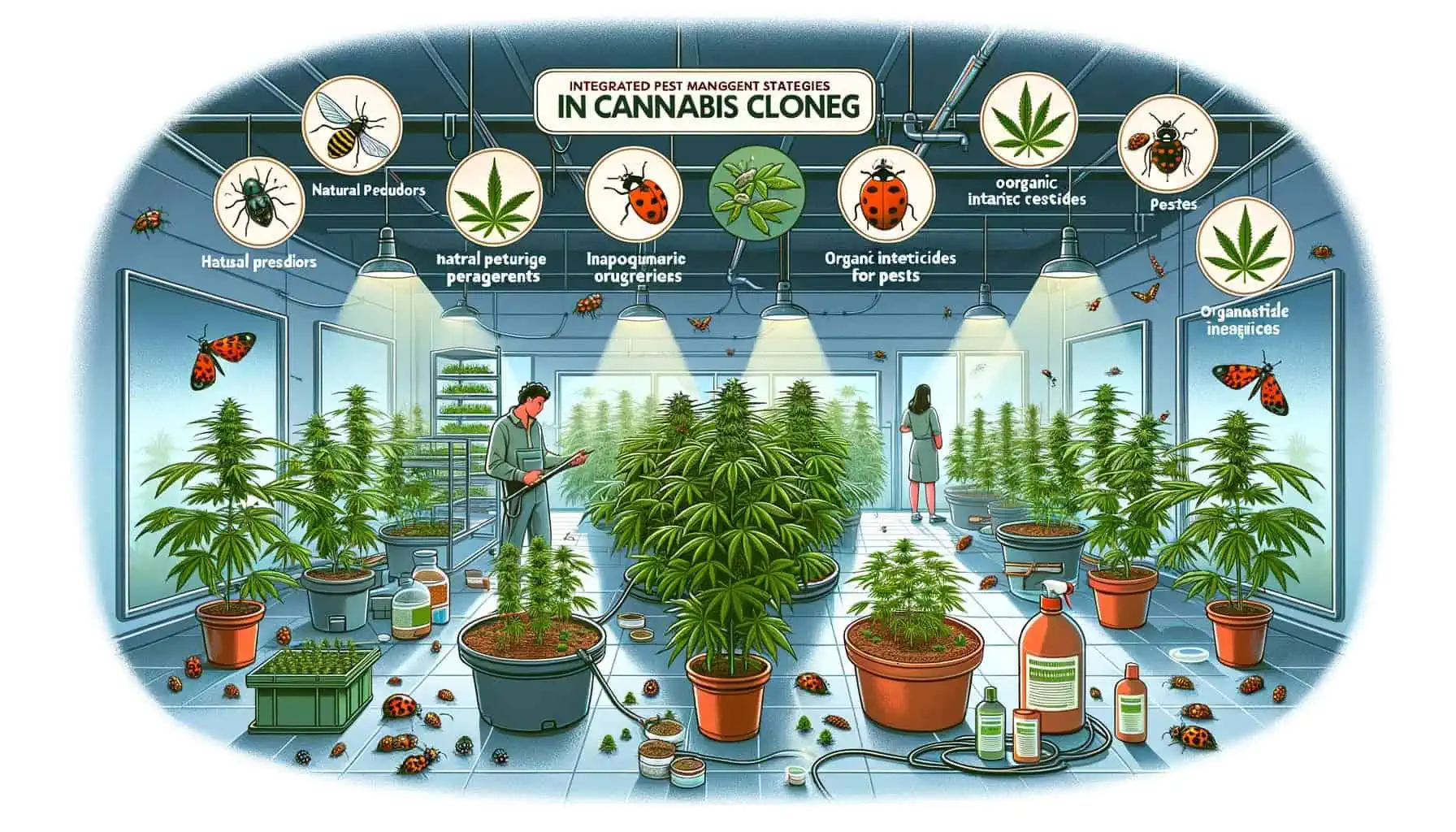
Conclusion
Cloning cannabis plants is a rewarding process that offers consistency and efficiency in propagating favorite strains. By adhering to the detailed steps and maintaining vigilant care, growers can achieve cloning cannabis success and enjoy a thriving cannabis garden. This guide aims to empower cultivators with the knowledge and tools necessary for effective cloning, contributing to the advancement and sustainability of cannabis cultivation.



